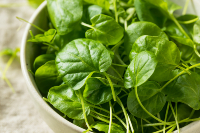
No Magic Required: Alleviate Congestion with Warming Socks
Who would ever guess that a pair of insulated, wet socks could help alleviate congestion from your head and stimulate the immune system? Sounds a bit like a storyline in a Disney movie, right?
A natural remedy that has been used by healers for centuries, it’s a fast-acting approach to reduce, or even arrest, congestion associated with mild colds, flu and allergies. It works for children and adults. Here’s how:
A pair of thin, wet cotton socks are covered (insulated) by a pair of heavy, dry wool or fleece socks. That’s right: you have to put on wet socks! Throughout the night, our body will bring warm blood to the feet, creating a pumping mechanism in the blood vessels that stimulates circulation and promotes release of congestion in the head and upper respiratory passages. In turn, this invigorates the immune system to fend off acute illness. By morning, the socks will be completely dry. And you should feel less congested.
Make a Pair of Warming Wet Socks
- Before bed, wet a pair of thin, cotton anklets in a bowl of ice cold water.*
- Wring out excess water and place on the feet.
- Pull a pair of heavy wool socks (at least 60% wool, 100% wool best) over the anklets and climb into bed.
- Cover well; sleep all night with the socks on.
*Optional Step– If you are feeling very cold, take a very warm shower before Step 1.
For best results, repeat treatment for three nights in a row or as instructed by your doctor.
Resources
Personal Communication: Eli Camp, N.D. January 2015.
Bastyr University. “Dive ‘Feet First’ Into Wellness With a Natural Remedy.” Accessed 10 Mar 2020: https://health.bastyr.edu/news/health-tips/2009/11/dive-feet-first-wellness-natural-remedy
Bastyr University. “A Surprising Cold Remedy for the Post-holiday Months.” Accessed 16 Mar 2020: https://health.bastyr.edu/news/health-tips/2017/01/surprising-cold-remedy-post-holiday-months













